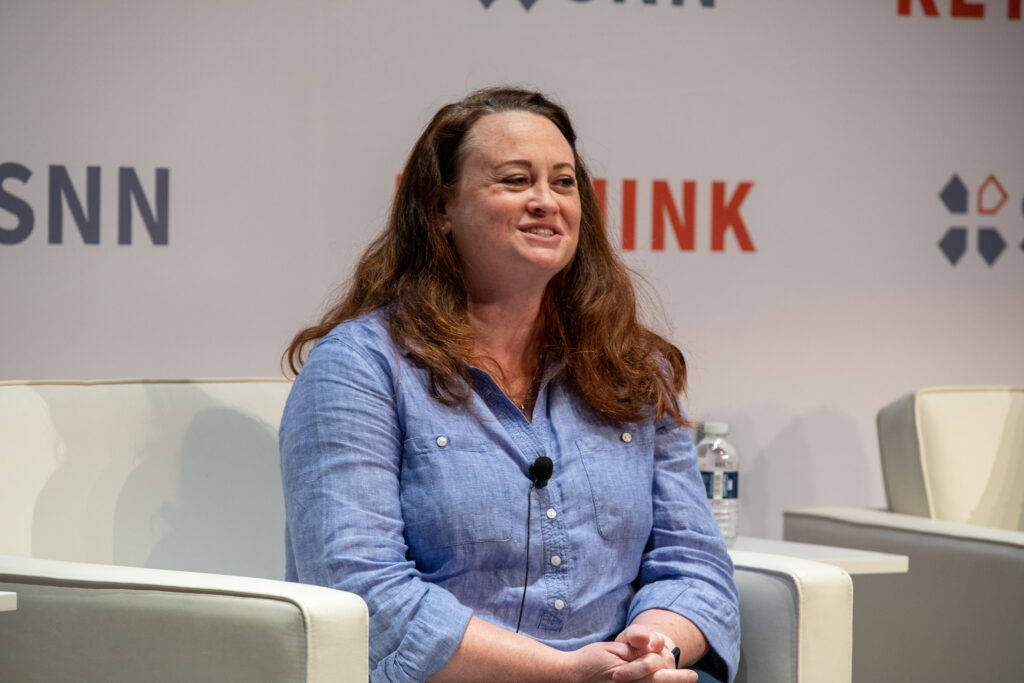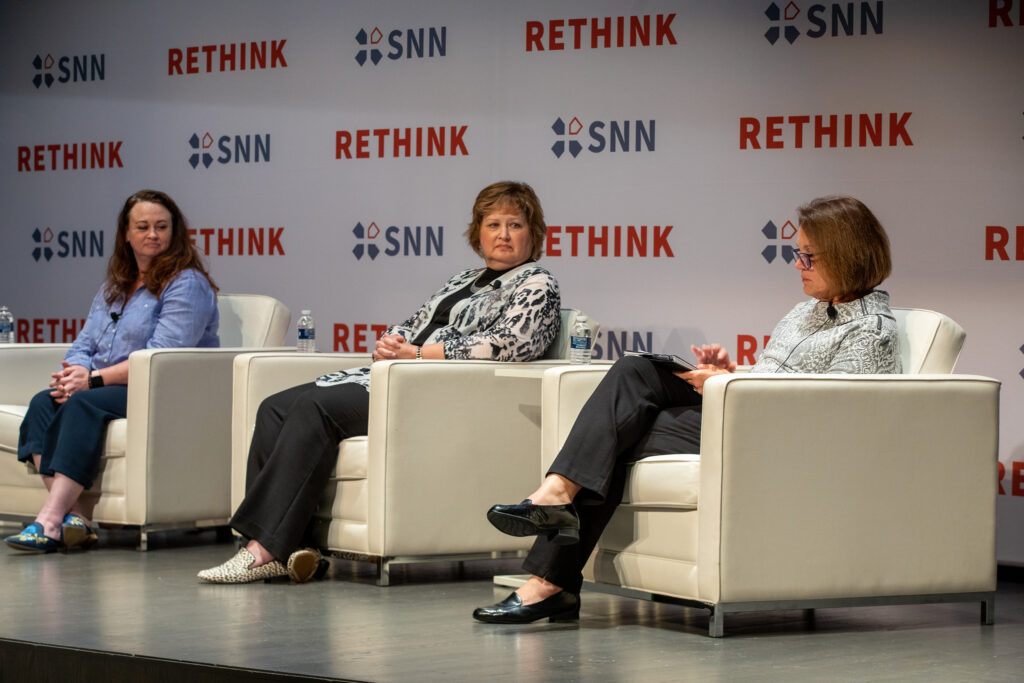Leaders from three large health systems say transparency, a willingness to work together and take on new residents, and more communicative, mindful care transitions are the best ways to strengthen relationships between hospitals and nursing homes.
Hospital executives have seen their relationships with skilled nursing operators expand in dynamic ways – sometimes strengthened, other times strained depending on resources available and communication on both sides.
In states like Utah, it took six to eight weeks before the public health department was a liaison between hospitals and nursing homes during the early days of Covid, according to Beth Ferguson, post-acute SNF network manager for Castell, an Intermountain Healthcare Company.
That left health systems and nursing homes to create their own daily huddles – a strengthened relationship and improved communication was borne out of necessity.
“I think that we value each other’s roles and responsibilities [more]. I think it also helped the state or other agencies recognize that we will be one voice when needed, and that can be very powerful,” Ferguson said.
Ferguson spoke at Skilled Nursing News’ RETHINK event at the beginning of the month, alongside Sue Craft, vice president of inpatient case management and post-acute care services for Henry Ford Health and Dawn Doe, vice president of value-based programs for Advocate Aurora’s Continuing Health Division.
What makes a good partnership
The first mark of a good partner, from the health system side, is a simple one – the SNF has to want to work with them.
Craft said there were many area facilities that outright said they weren’t interested in working with Henry Ford. It got to the point where the system was looking at facilities with lower star ratings, who really wanted to work together to improve care.
Another marker of a strong partnership is transparency, panelists said, as a way to improve processes used while transitioning a patient from one part of the care continuum to another.
“We share the good, the bad and the ugly. We ask them to do the same because, you can look at star ratings and publicly reported data, but it doesn’t really tell the story,” Craft said.
Advocate Aurora lets patients and their families take the lead. The health system looks at where patients want to go, and then approaches those facilities for partnerships.
“We just started peeling away the onion, per se, to get the most appropriate network in place,” she said.
What patients and hospitals want and what SNFs offer aren’t necessarily the same thing, Ferguson said. In terms of payment models, SNFs prefer Medicare fee-for-service (FFS) while Intermountain is tipping more toward having a majority of value-based care patients.

“Finding those partners that want to engage and go down that [VBC] route, and are willing to change the culture and the way in which they are caring for the skilled patients, and communicate with us, has really become more important,” she said.
An evolving relationship
As frustration grew on both sides given slow government action, staffing issues and regulatory whiplash in the last several years, Doe said the relationship between hospitals and SNFs got more complex, more dynamic, and at times, strained.
Regulatory requirements and a lack of consistency down to the county level led to a lot of confusion and frustration between hospitals, SNFs as well as residents and their families, Doe said.
“We’re still feeling it because of the difficulty of moving patients and with our length of stay going up,” Doe said. “I think we’re going to really need to continue repairing that relationship.”
While the need for hospital beds isn’t as bad as it was in 2020, Craft said, health systems have continued to struggle with getting patients discharged to free up space.
“We’ve seen our length of stay go up, which for our hospital leaders is never a good thing,” added Craft.
Doe feels hospital systems see this point in the pandemic as an opportunity to redefine what the relationship between SNFs and hospitals looks like. It’s a moment in time when both sides can decide what the narrative will look like moving forward and ensure everyone is working at the top of their license across all care settings.
It’s also a matter of making sure the patients have what they need to be successful in recovery, she said.
Communication is going to be key as the relationship evolves; hospitals and SNFs will strive to make transitions in care as easy and helpful as possible.
A “warm handoff,” as Craft puts it, is something as small as making a phone call to expand on what a patient might look like on paper. Access to the same data entry software helps too.
“We’ve given our partners access to Epic, which is the [electronic health record software (EHR)] that we use, but it’s cumbersome to expect that they’re going to be able to go digging through a medical record and find information that we need,” Craft said. “I think the communication piece is probably the most important for us.”
Beyond five-star ratings
Hospital systems aren’t just going by the Five-Star Quality Rating System anymore when choosing SNFs for their network – many have their own internal data, tracking patients once they leave the hospital to see how they are cared for in network facilities.
Advocate Aurora has increasingly included SNFs in patient transition discussions at a higher level, Doe said, to figure out facility pain points and what might need to be added in terms of specialty programs and ancillary services.
This is all while hospitals continue to struggle with placing patients at the right level of care and lower cost setting while maintaining good outcomes and decreased readmissions as part of value-based care, Doe added.
The largest challenge for placement, according to Ferguson, has been residents in need of behavioral health services.
“I know that one thing that I really try and pay attention to is what service or what population can you care for,” Ferguson said. “One thing I’ve been working really hard with on the hospital care management side is teeing up that next next step so that no one is feeling like they’re left holding the ball, and don’t have a next move. I think that becomes a really powerful way to connect.”
Companies featured in this article:
Advocate Aurora Health, Castell Health, Henry Ford Health System, Intermountain Health



